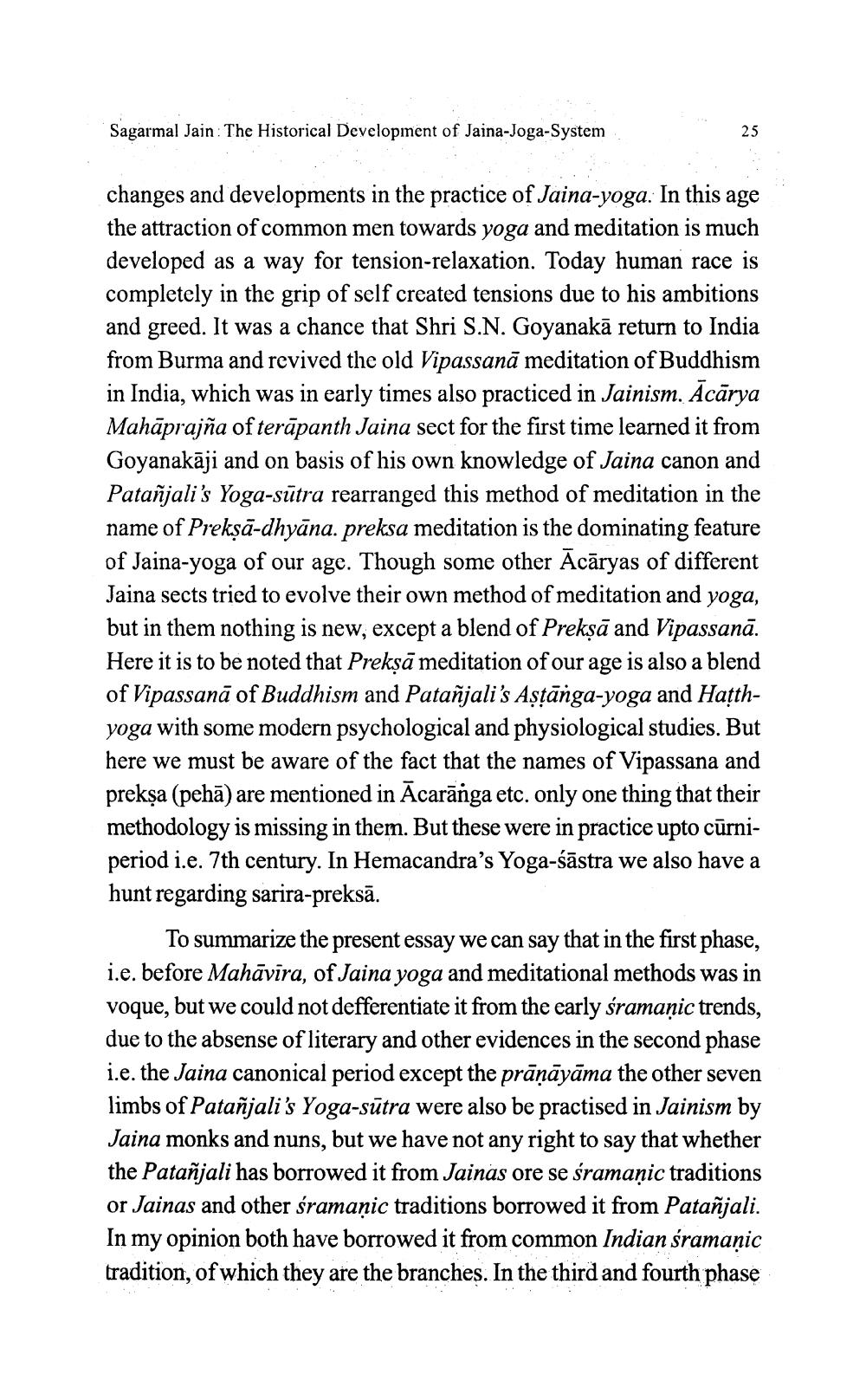________________
Sagarmal Jain: The Historical Development of Jaina-Joga-System
25
changes and developments in the practice of Jaina-yoga. In this age the attraction of common men towards yoga and meditation is much developed as a way for tension-relaxation. Today human race is completely in the grip of self created tensions due to his ambitions and greed. It was a chance that Shri S.N. Goyanakā return to India from Burma and revived the old Vipassanā meditation of Buddhism in India, which was in early times also practiced in Jainism. Ācārya Mahāprajña of terāpanth Jaina sect for the first time learned it from Goyanakāji and on basis of his own knowledge of Jaina canon and Patañjali's Yoga-sūtra rearranged this method of meditation in the name of Prekṣā-dhyāna. preksa meditation is the dominating feature of Jaina-yoga of our age. Though some other Ācāryas of different Jaina sects tried to evolve their own method of meditation and yoga, but in them nothing is new, except a blend of Prekşā and Vipassanā. Here it is to be noted that Prekşā meditation of our age is also a blend of Vipassanā of Buddhism and Patañjali's Aștānga-yoga and Haţthyoga with some modern psychological and physiological studies. But here we must be aware of the fact that the names of Vipassana and prekșa (pehā) are mentioned in Acarānga etc. only one thing that their methodology is missing in them. But these were in practice upto cūrniperiod i.e. 7th century. In Hemacandra's Yoga-śāstra we also have a hunt regarding sarira-preksā.
To summarize the present essay we can say that in the first phase, i.e. before Mahāvīra, of Jaina yoga and meditational methods was in voque, but we could not defferentiate it from the early śramaņic trends, due to the absense of literary and other evidences in the second phase i.e. the Jaina canonical period except the prāņāyāma the other seven limbs of Patañjali's Yoga-sūtra were also be practised in Jainism by Jaina monks and nuns, but we have not any right to say that whether the Patañjali has borrowed it from Jainas ore se sramaņic traditions or Jainas and other śramaņic traditions borrowed it from Patañjali. In my opinion both have borrowed it from common Indian śramaņic tradition, of which they are the branches. In the third and fourth phase




